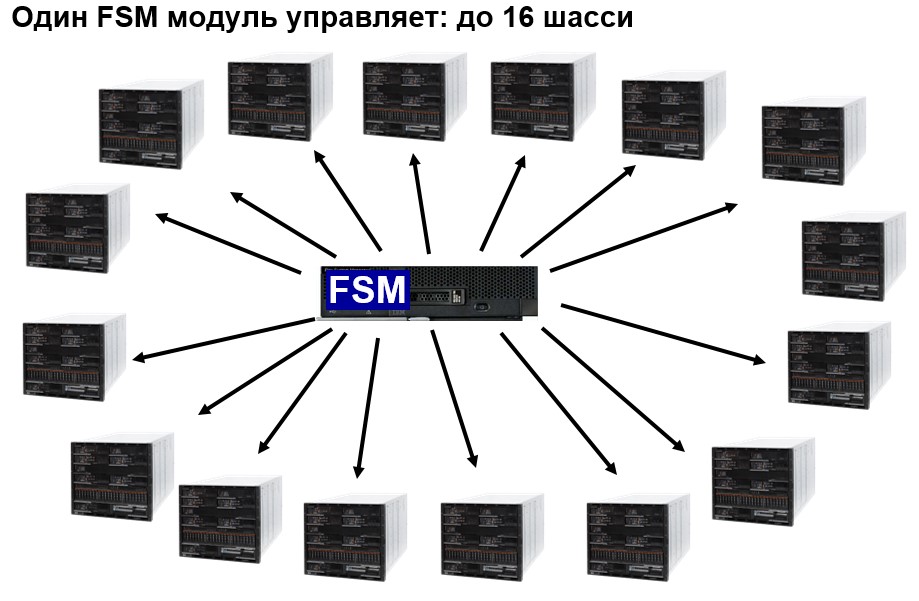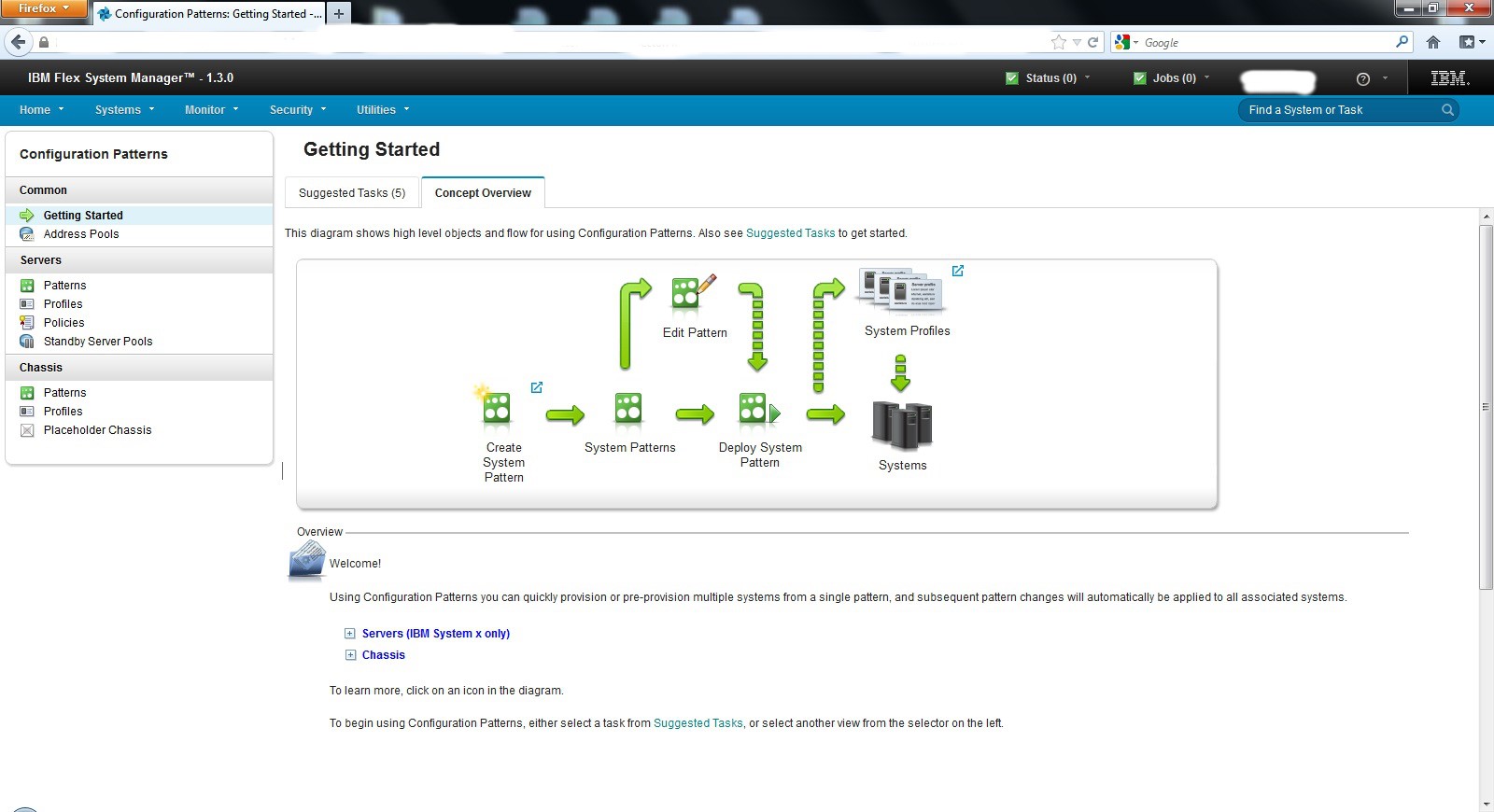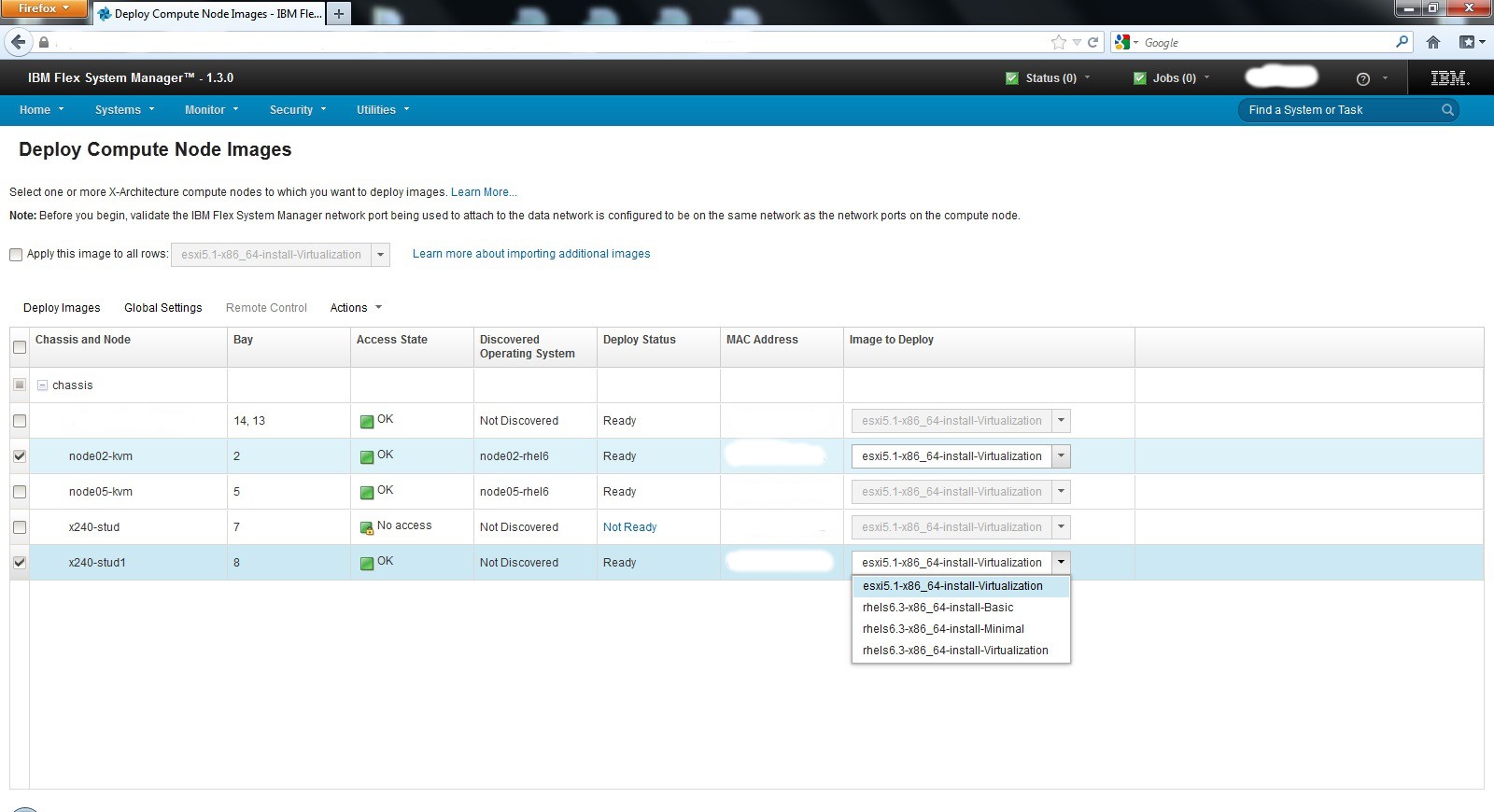New IT infrastructure management and IBM Flex System Manager features
Hello again!
I want to continue the description of the IBM Pure Systems family of systems. The first article with a general description of the system is here . Let us consider in more detail the components of which this system consists. I want to start with the most interesting part - the control system. The module is responsible for monitoring, managing and various additional features.
What needs led to the creation of this solution:
• Increased infrastructure, leading to management issues. The number of servers and storage systems is growing every day. Managing all this "zoo" every day more and more difficult
• Infrastructure flexibility. The increase in infrastructure leads to the fact that the amount of resources used is not always clear and it is difficult to use free resources.
• Security issues. A large number of consoles control various equipment with different access passwords. The lack of a unified accounting base and a single distribution of access rights.
• Reduced risk. Most projects do not unfold on time due to the human factor (lack of competence, lack of resources or mistakes)
• The complexity of managing a multiplatform solution. The presence in the infrastructure of not only the x86 platform, but also the RISC machines create difficulties in managing the entire system.
• Maintain ease of control when scaling a platform. Solutions that guarantee a single, simple form of management, both at the current stage and at the next stage of scaling the system.
• Automate most routine everyday tasks. In the conditions of huge infrastructures (more than 100 physical servers), process automation would save a lot of time.
There are a large number of control systems from different manufacturers and sometimes free. Why invent something new?
The IBM Pure Flex system is the first system with deep integration of all components, not only hardware (storage, servers and switches), but also software elements (hypervisors and virtual machine management), which places new demands on the management and monitoring system.
')
How does the IBM Pure Flex system solve your tasks? The IBM Flex System Manager management module is responsible for this.
The IBM Flex System Manager control module is a physical node, and occupies one installation location in the chassis, while it can manage up to 16 chassis or 448 servers for the current day.

A brief list of key features of IBM Flex System Manager:
• Real-time monitoring of chassis hardware components with additional information (Fans, installed servers, switches, power supplies)
• Automatic fault detection (failure prediction system for a large number of parameters (disks, processors, processor power modules, etc.)) and setting up notification mechanisms (email, sms) and troubleshooting actions (for example, the system can automatically open a request in the service center)
• Identification of changes that affect the availability and availability of the system, i.e. determination of system performance and fault tolerance in case of any actions.
• Display of the level of resource usage by the virtual machine or another set of components, i.e. total assessment of the effectiveness of the use of the system
• Automatic detection of physical and virtual servers, and their switching paths, allows you to transparently manage the network infrastructure.
• Accounting for hardware components. An inventory of existing equipment makes it easy to predict future purchases and track resource utilization.
• Description of hardware features
• Relevance of firmware versions of equipment. The ease of determining the firmware of all equipment and their group updates.
• Manage network switches from different manufacturers. Those. unified management of the entire data center network infrastructure
• Support for various KVM, IBM PowerVM, VMware, Microsoft hypervisors and various virtual switches
• Integration with the computing resource management environment (vCenter, etc.)
• Collaboration with physical and virtual storage devices
• Resource Pool Configuration
• Ability to create, edit, manage and reconfigure virtual servers
Optional feature set:
• Creating new repositories for storing virtual devices
• Import external new virtual devices to existing repository
• Creating a system resource pool that will consolidate workloads into managed groups
What it looks like:

The IBM Pure Systems family of systems have built-in expertise. This expertise is based on the use of a template system preconfigured and configured. Templates are of various types, templates for computing resources, network infrastructure and data storage systems.
All these types of templates are aimed at increasing the speed of reaction to changes, at reducing administrative costs in allocating new resources, at accelerating the benefits from the allocated resources, and at reusing existing experience and knowledge when creating new systems.
Templates can be created by IBM specialists, specialists of independent software development organizations (SAP, Siemens, Diasoft, etc.) and specialists within the customer organization.

Obviously, many customers have unique applications that are not replicated and not used by other organizations. On the other hand, within the enterprise, their constant use is required, therefore such an option was provided where the customer himself can develop templates.

It is important that the templates are in the open repository and can be used in the future.
The main advantage of IBM Flex System Manager is the creation of a single management center for the IBM Pure Flex system, monitoring and administration of both physical and virtual resources, both internal and external (through import mechanisms).
PS Colleagues, what would you like to see in future reviews? Leave your wishes in the comments.
I want to continue the description of the IBM Pure Systems family of systems. The first article with a general description of the system is here . Let us consider in more detail the components of which this system consists. I want to start with the most interesting part - the control system. The module is responsible for monitoring, managing and various additional features.
What needs led to the creation of this solution:
• Increased infrastructure, leading to management issues. The number of servers and storage systems is growing every day. Managing all this "zoo" every day more and more difficult
• Infrastructure flexibility. The increase in infrastructure leads to the fact that the amount of resources used is not always clear and it is difficult to use free resources.
• Security issues. A large number of consoles control various equipment with different access passwords. The lack of a unified accounting base and a single distribution of access rights.
• Reduced risk. Most projects do not unfold on time due to the human factor (lack of competence, lack of resources or mistakes)
• The complexity of managing a multiplatform solution. The presence in the infrastructure of not only the x86 platform, but also the RISC machines create difficulties in managing the entire system.
• Maintain ease of control when scaling a platform. Solutions that guarantee a single, simple form of management, both at the current stage and at the next stage of scaling the system.
• Automate most routine everyday tasks. In the conditions of huge infrastructures (more than 100 physical servers), process automation would save a lot of time.
There are a large number of control systems from different manufacturers and sometimes free. Why invent something new?
The IBM Pure Flex system is the first system with deep integration of all components, not only hardware (storage, servers and switches), but also software elements (hypervisors and virtual machine management), which places new demands on the management and monitoring system.
')
How does the IBM Pure Flex system solve your tasks? The IBM Flex System Manager management module is responsible for this.
The IBM Flex System Manager control module is a physical node, and occupies one installation location in the chassis, while it can manage up to 16 chassis or 448 servers for the current day.

A brief list of key features of IBM Flex System Manager:
• Real-time monitoring of chassis hardware components with additional information (Fans, installed servers, switches, power supplies)
• Automatic fault detection (failure prediction system for a large number of parameters (disks, processors, processor power modules, etc.)) and setting up notification mechanisms (email, sms) and troubleshooting actions (for example, the system can automatically open a request in the service center)
• Identification of changes that affect the availability and availability of the system, i.e. determination of system performance and fault tolerance in case of any actions.
• Display of the level of resource usage by the virtual machine or another set of components, i.e. total assessment of the effectiveness of the use of the system
• Automatic detection of physical and virtual servers, and their switching paths, allows you to transparently manage the network infrastructure.
• Accounting for hardware components. An inventory of existing equipment makes it easy to predict future purchases and track resource utilization.
• Description of hardware features
• Relevance of firmware versions of equipment. The ease of determining the firmware of all equipment and their group updates.
• Manage network switches from different manufacturers. Those. unified management of the entire data center network infrastructure
• Support for various KVM, IBM PowerVM, VMware, Microsoft hypervisors and various virtual switches
• Integration with the computing resource management environment (vCenter, etc.)
• Collaboration with physical and virtual storage devices
• Resource Pool Configuration
• Ability to create, edit, manage and reconfigure virtual servers
Optional feature set:
• Creating new repositories for storing virtual devices
• Import external new virtual devices to existing repository
• Creating a system resource pool that will consolidate workloads into managed groups
What it looks like:

The IBM Pure Systems family of systems have built-in expertise. This expertise is based on the use of a template system preconfigured and configured. Templates are of various types, templates for computing resources, network infrastructure and data storage systems.
All these types of templates are aimed at increasing the speed of reaction to changes, at reducing administrative costs in allocating new resources, at accelerating the benefits from the allocated resources, and at reusing existing experience and knowledge when creating new systems.
Templates can be created by IBM specialists, specialists of independent software development organizations (SAP, Siemens, Diasoft, etc.) and specialists within the customer organization.

Obviously, many customers have unique applications that are not replicated and not used by other organizations. On the other hand, within the enterprise, their constant use is required, therefore such an option was provided where the customer himself can develop templates.

It is important that the templates are in the open repository and can be used in the future.
The main advantage of IBM Flex System Manager is the creation of a single management center for the IBM Pure Flex system, monitoring and administration of both physical and virtual resources, both internal and external (through import mechanisms).
PS Colleagues, what would you like to see in future reviews? Leave your wishes in the comments.
Source: https://habr.com/ru/post/201936/
All Articles